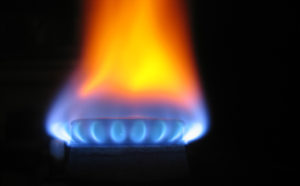 Natural gas fell on Friday, following a government report that showed US gas supplies declined less than projected in the week ended January 10th. However, the energy source continued to draw support by cold weather outlook over many densely-populated US areas.
Natural gas fell on Friday, following a government report that showed US gas supplies declined less than projected in the week ended January 10th. However, the energy source continued to draw support by cold weather outlook over many densely-populated US areas.
On the New York Mercantile Exchange, natural gas for delivery in February fell by 0.57% to trade at $4.357 per million British thermal units by 09:37 GMT. Prices hit a session high at $4.383 per mBtu, while day’s low was touched at $4.355 per mBtu.
The February contract surged by 5.4% to close at $4.297 per mBtu on Monday, marking the largest daily increase since April 29. Last week, the energy source declined 5.7%, after losing 0.4% in the previous 5-day period. However, prices settled last year 26% higher, the best performance since 2005 and second straight annual advance.
EIAs weekly US gas storage report
The Energy Information Administration (EIA)reported on Thursday that US gas supplies fell by 287 billion cubic feet in the week ended January 10th, the largest decline on record, but lower than the median analyst forecast of 303 billion cubic feet drop in a poll by Citi Futures Perspective. This was almost double the the 5-year average decline of 159 billion cubic feet. The previous record decline was a drop of 285 billion cubic feet in the week ended December 13th, EIAs data show.
Total gas held in underground storage hubs equaled 2.530 trillion cubic feet as of January 10th, 20.7% below last year’s 3.189 trillion stored. The deficit to the five-year average widened to a record 14.9% from the preceding week’s 10.1%.
Inventories in the East Region fell by 149 bcf to 1.254 trillion and were 18.9% below the five-year average of 1.546 trillion cubic feet. The West Region received a net draw of 31 bcf to 364 bcf, 11.2% below the average. Stockpiles in the Producing Region slid by 107 billion cubic feet and reached 912 bcf, 10.2% beneath the five-year average of 1.016 trillion cubic feet.
Short-term cold weather outlook
NatGasWeather.com reported on January 17th that a reinforcing shot of cold air will sweep across the Midwest today, before it pushes into the Northeast overnight, with localized areas of light snowfall. Additional reinforcing blasts of cold air will continue to push deep into southeastern US over the next 10 days. Each of the outbreaks has the potential to bring several inches of snow, especially over the Midwest and Northeast.
Another round of cold and localized light snowfall will probably impact US on Saturday into Sunday, before the weather pattern modifies briefly on Sunday night and Monday, temporarily warming temperatures. Yet another dose of cold air will probably hit the Midwest and Northeast next Tuesday and Wednesday.
According to the website the weather pattern in the coming weeks will clearly support natural gas prices, even if the snowfall remains scarce and temperatures in the western US remains mild.
Extended forecast
NatGasWeather.com’s reported in its extended forecast for the week ended January 31 st that a fairly impressive outbreak will probably invade much of the US around January 25th and will last through the end of the month. According to the website, the natural gas demand will surge during this period as much of the US will experience below-normal temperatures with areas of snow and ice. Freezing temperatures may gain push deep into the South.
According to AccuWeather.com, temperatures in Cleveland on January 26th may bottom at 14 degrees Fahrenheit, 9 below average, while the low in Chicago may hit 7 degrees, beneath the average of 18 degrees. Temperatures in Indianapolis are expected to bottom at 13 degrees Fahrenheit, 7 below normal.
When cold weather is expected, natural gas surges as increased electricity demand to power air-conditioning calls for more supply of the fuel, which is used for a quarter of U.S. electricity generation. Above-average readings in the winter season have the opposite effect. Consumption usually picks up from November through March. According to the Energy Information Administration, power generation accounts for 32% of U.S. gas demand and 49% of U.S. households use the energy source for heating.





